#hesperoyucca
Text
i hate hesperoyuccas. if hesperoyuccas have a million haters i am one of them. if they have one hater i am that hater. if they have zero haters i am no longer on this earth. etc etc etc.
#this post brought to you by the ‘hates getting stabbed while transporting plants’ gang#horticulture#gardening#hesperoyuccas SUCK
0 notes
Text
this hesperoyucca three weeks ago...


this hesperoyucca NOW!!!!!
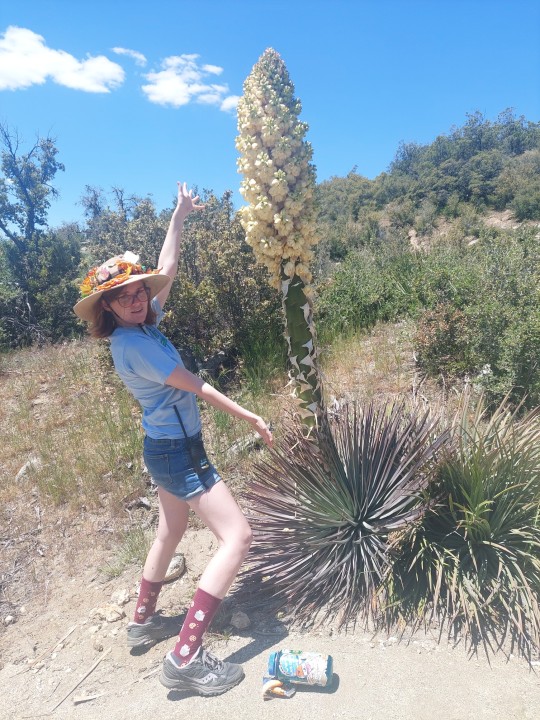
45 notes
·
View notes
Text
ウィップレイ ユッカ ヘスペロユッカの特徴と育て方
● ユッカ ウィップレイの品種の特徴
「ウィップレイ」は美しいシルバーブルーの葉を持つユッカです。美しいロゼッタ状、放射線状に葉が広がります。幹立ちせず背が高くならないため、お庭の足元のアクセントにおすすめです。
太い幹と上向きの葉を茂らせるユッカは、「青年の木」としても親しまれています。観葉植物やシンボルツリーとしても人気が高く、暑さ寒さに強く手間があまりかからない点も嬉しいところ。成長は極めてゆっくりなため、長いお付き合いができる木と言えなくもないかも?なんせ2m級になるのに何十年もかかることも。不定期にですが不思議な花を咲かせます。ユッカは花を咲かせても枯れることはありませんのでご安心を。
学名
Hesperoyucca…
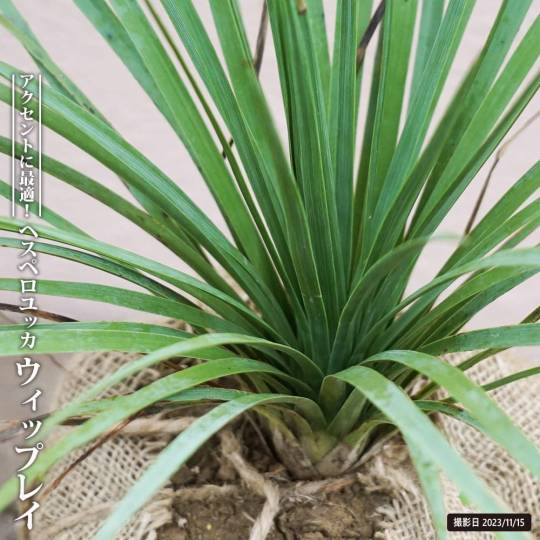
View On WordPress
0 notes
Text

Hesperoyucca whipplei (Chaparral yucca) growing near San Antonio creek
0 notes
Photo
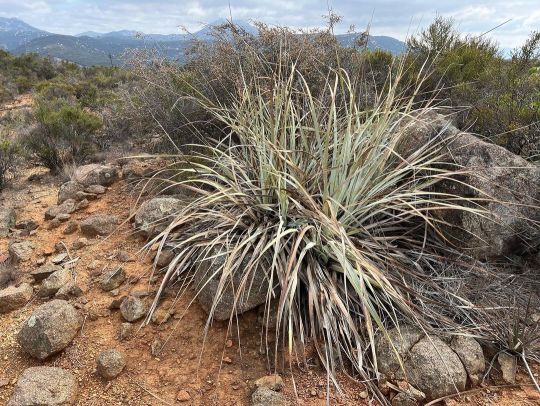
#NolinaInterrata AKA #DehesaNolina or #DehesaBeargrass, a plant limited to about a six square mile area in San Diego county and a few small locations in northern Baja California. It was considered for the federal endangered species list but ultimately rejected because fortunately most of them are on protected lands (like #SycuanPeakEcologicalReserve). Still it’s ranked 1B.1 by the California Native Plant Society (rare, threatened or endangered in CA & elsewhere) and threatened by altered fire regime, invasive plants, and overall habitat destruction. This species is an #edaphicendemic and grows on mafic gabbroic and metavolcanic soils which have high amounts of iron and magnesium and are inhospitable to most plants. There are a lot of cool rare plants in San Diego adapted to these soils. Dehesa nolina is kind of hard to tell apart from chaparral yucca (Hesperoyucca whipplei) sometimes because they’re both grassy rosettes and chaparral yucca sometimes has similarly long, bluish-grayish foliage. Other than the flowers being very different you’ll notice that the nolina lacks those needle-sharp spines at the end of its leaves and instead they have jagged edges to them. The leaves on nolina get droopy too. They also form clusters of rosettes whereas the yucca only grows one before it flowers and dies. Check out the last three pictures to see chaparral yucca and Dehesa nolina next to each other and then one with just the nolina. In one photo the foliage is a very different shade of green and in the other one you can tell by their overall shapes. I found out fairly recently that I had been seeing these plants with some regularity for a large portion of my life and had no idea that they were different from chaparral yucca and only lived my very small area of the world. Learn about your local flora and fauna! It’s eye-opening. (And correct me if I’ve said anything inaccurate, because I’m just some nerd who likes plants a lot. 😅) (at Sycuan Peak) https://www.instagram.com/p/CkCqG4LjAsT/?igshid=NGJjMDIxMWI=
0 notes
Photo
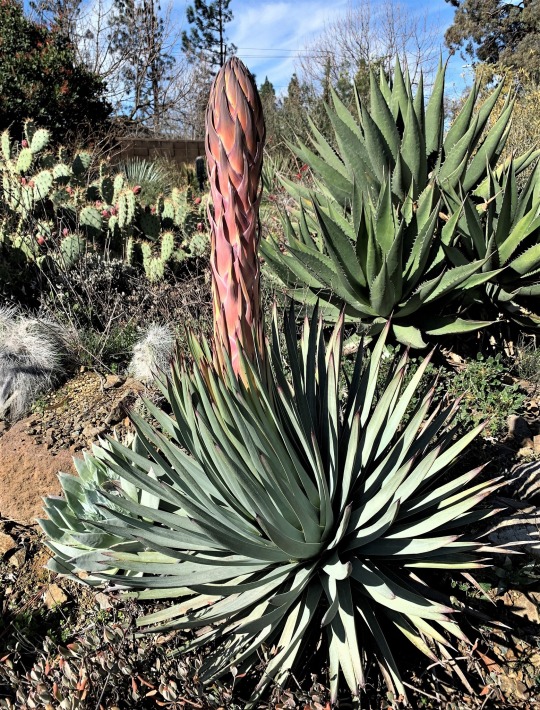
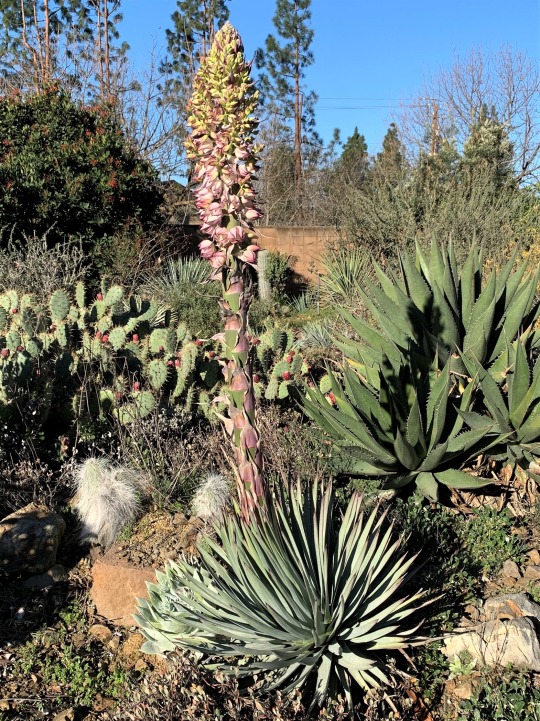

Hesperoyucca whipplei
This amazing plant is native to the southern half of California and the northern half of Baja California. It was long classified as a Yucca, under the name Yucca whipplei, but its flowering habit is like that of an Agave - storing up energy for many years, and then putting everything into a large flowering stalk that shoots up like an asparagus shoot. Then, after it flowers, the rosette dies. So finally it got its own genus, Hesperoyucca, while keeping the species-name whipplei. We have never before had one come into flower so early in the year, and it happened with stunning rapidity - less than 2 weeks from the stalk starting to grow until it was in flower. The upper photo above was taken on Feb. 17, while the lower 2 were taken only a week later, on Feb. 24. Also noteworthy is the flower color: most often, Hesperoyucca whipplei has white flowers, but sometimes the petals are purple-tipped or flushed with purple. In this case, they have purple edging that gives them a very distinctive look.
-Brian
57 notes
·
View notes
Photo
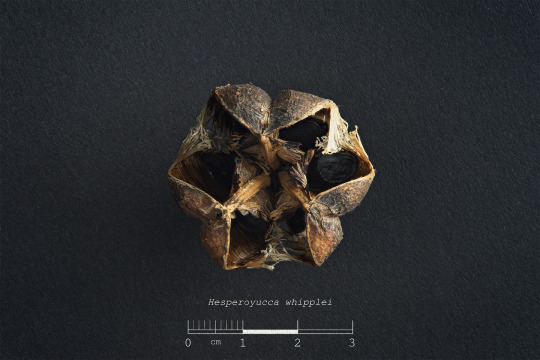
Hesperoyucca whipplei or Chaparral Yucca is a common sight through southern California and Baja California where it grows as the name suggests in chaparral among other habitats.
The plant is pollinated through a symbiotic relationship with the California Yucca Moth (Tegeticula maculata) in which she collects a ball of pollen from several flowers and deliberately pollinates another flower with it. An egg is laid into the ovary of the flower, having ensured that many seeds will set to provide food for the larva.
Native Americans made use of just about every part of the plant: fiber from the leaves, flowers, stem, pods, and seeds all providing food.
#hesperoyucca#species#yucca#chaparral#california#socal#botany#horticulture#native#photo#photograph#photography#seedpod
42 notes
·
View notes
Photo

Spring Yellow .. [2 / 2]
Leaves of a chaparral yucca tree by the road side at Angeles National Forest, near Pasadena, CA.
#Panasonic#Lumix#ZS-7#botanical#Angeles National Forest#Pasadena#Los Angeles#California#USA#Hesperoyucca#Hesperoyucca whipplei#H. whipplei#PictureThis
6 notes
·
View notes
Photo
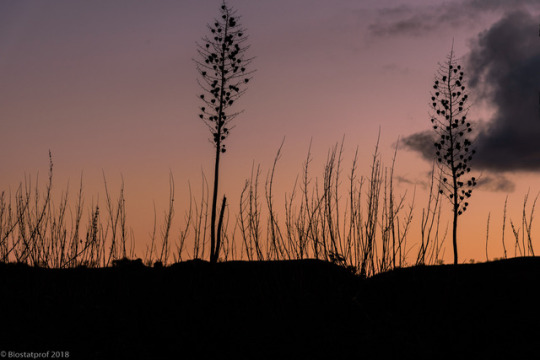
Yucca silhouette against an evening sky.
#Hesperoyucca whipplei#chaparral#santa clarita valley#original photographers#photographers on tumblr
12 notes
·
View notes
Photo
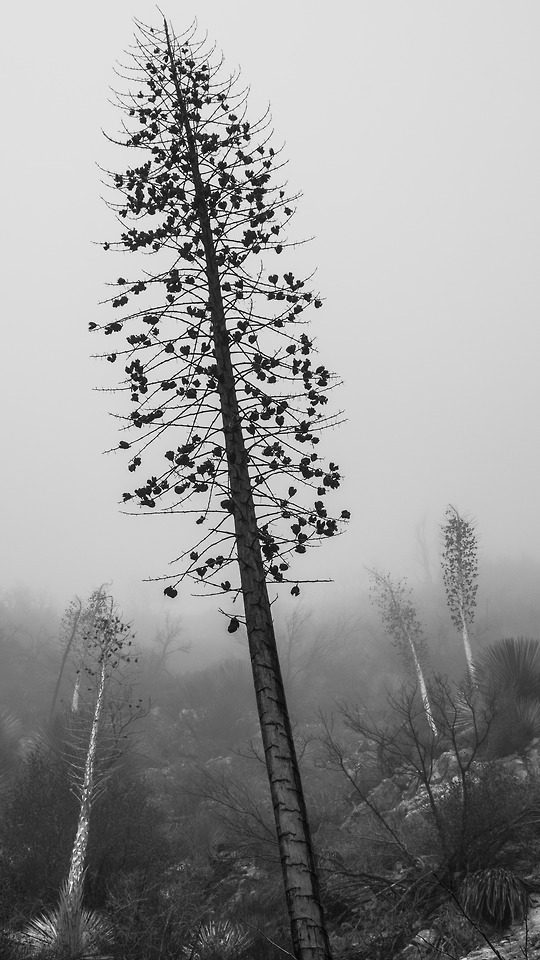
Hesperoyucca whipplei - aka spanish bayonets littered the path
#it was terrible#hike with me#yucca#hesperoyucca whipplei#spanish bayonets#black and white#mist#eerie#Mt. Lawlor#los angeles national forest#san gabriels
1 note
·
View note
Text
DAY 2 @ MILLARD - Hesperoyucca whipplei
Date: 10/2/2019
Time: 10:31 AM
Location: Brown Mountain Trail past Millard Campsite
Route: @ Millard Canyon campside, cross the stream and head up Brown Mountain Truck Trail to the left. Go up the slope and it’ll be to your right!
Weather: about 70 F; sunny with shade from oak
Habitat: In a shrub community on the edges of an oak forest
HESPEROYUCCA WHIPPLEI - CHAPARRAL YUCCA

This plant was interesting. I’d seen it on my drive into the canyon on the sides of cliffs and was wondering how it got there. I’m glad I got to see it up close. Chaparral yucca was growing on the shrubby outskirts of an oak forest, surrounded by dried up dead grass.
It looked like a tumbleweed with its large cluster of long, thin, spade-like leaves. The leaves were dusty green like white sage, but super rigid and long. They had the shape of aloe vera leaves without being that thick. Leaves were about a foot and half long and ended with a sharp point. If you looked really closely, they had barely serrated edges - which I only found out after stabbing myself accidentally.
The yucca was kinda short - halfway up my knee (about 2 ft), but it was wider than it was tall.
0 notes
Photo
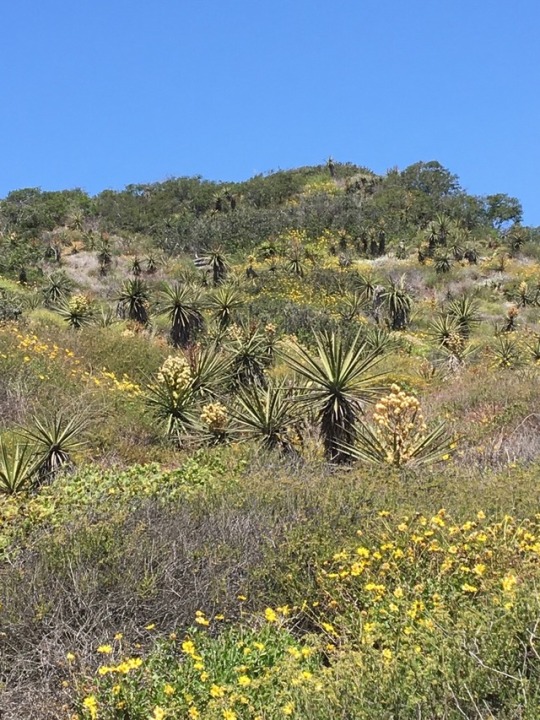


#wildflowers#california landscape#mojave yucca#agave shawii#succulents#our lord's candle#hesperoyucca whipplei#torrey pines
2 notes
·
View notes
Photo
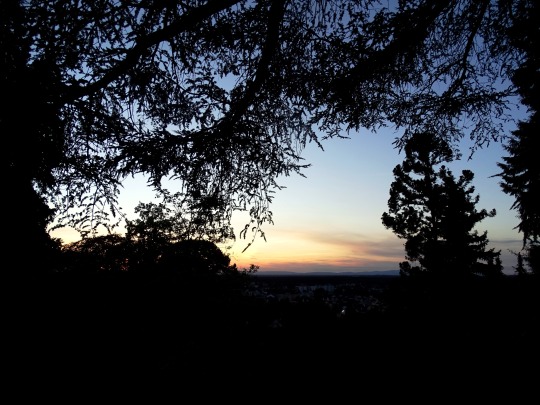





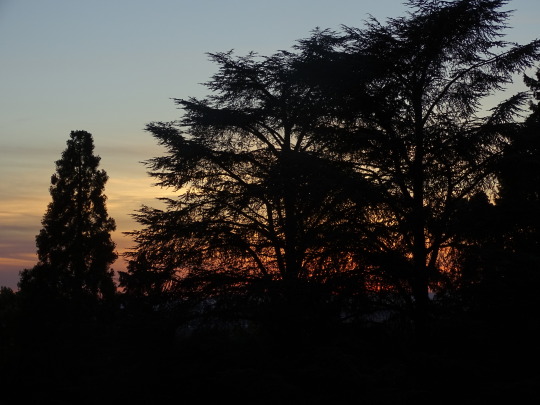



After Sunset, Seeheim-Jugenheim
Agave is a genus of monocots native to the hot and arid regions of the Americas, although some Agave species are also native to tropical areas of South America. The genus Agave (from the Ancient Greek αγαυή, agauê) is primarily known for its succulent and xerophytic species that typically form large rosettes of strong, fleshy leaves. Plants in this genus may be considered perennial, because they require several to many years to mature and flower. However, most Agave species are more accurately described as monocarpic rosettes or multiannuals, since each individual rosette flowers only once and then dies (see semelparity); a small number of Agave species are polycarpic.
Along with plants from the closely related genera Yucca, Hesperoyucca, and Hesperaloe, various Agave species are popular ornamental plants in hot, dry climates, as they require very little supplemental water to survive. Most Agave species grow very slowly. Some Agave species are known by the common name "century plant".
Source: Wikipedia
#Seeheim-Jugenheim#Hesse#Hessen#west-central Germany#Germany#Deutschland#summer 2020#Goldschmidts-Park#silhouette#evening light#flora#tree#shrub#bush#original photography#after sunset#landscape#small town#flower#Agave#blooming#Europe#landmark#colors#blue#orange#red#yellow
1 note
·
View note
Photo

Hesperoyucca whipplei
I have recently posted photos of this plant, but it impresses me all over again every time I come to the garden. Now known as Hesperoyucca whipplei, it was previously classified as a yucca (Yucca whipplei). What is so unusual about our flowering specimen is its wonderfully purple-edged petals. Here we see into the interior of the flower, with its puffy green-tipped pistil and its puffy pale yellow-tipped stamens.
-Brian
22 notes
·
View notes
Photo
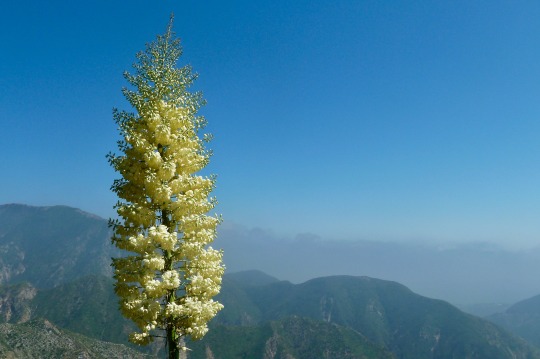
Lonesome Tree .. [1 / 2]
Chaparral yucca tree, Angeles National Forest, near Pasadena, CA.
#Panasonic#Lumix#ZS-7#botanical#Angeles National Forest#Pasadena#Los Angeles#California#USA#Hesperoyucca#Hesperoyucca whipplei#H. whippleyi#PictureThis
2 notes
·
View notes